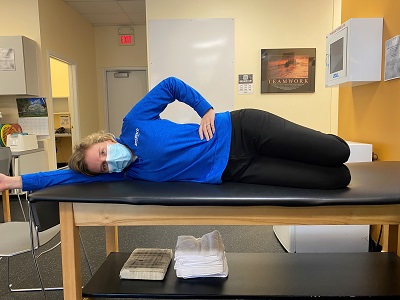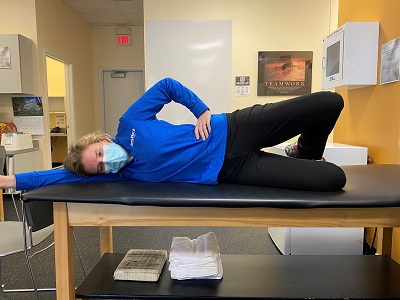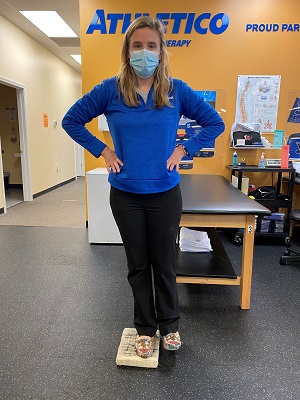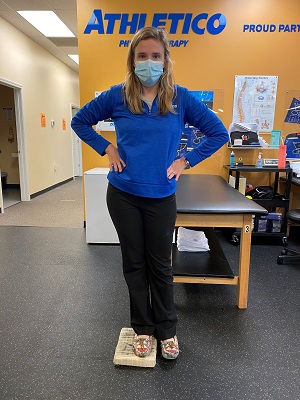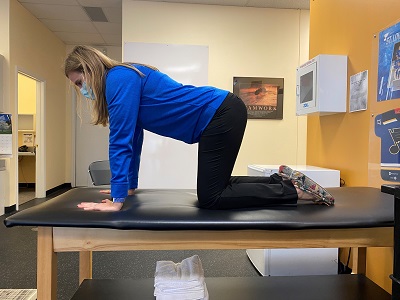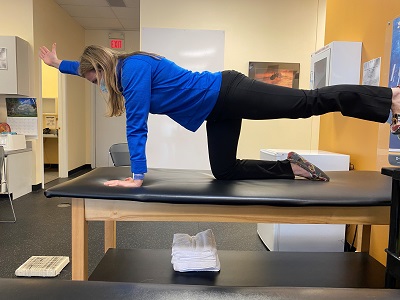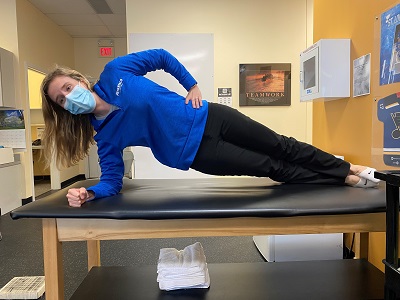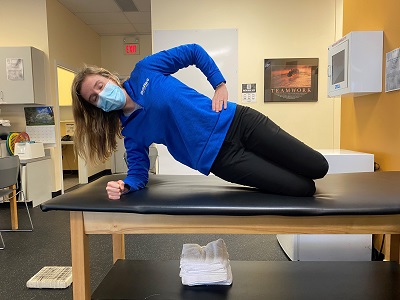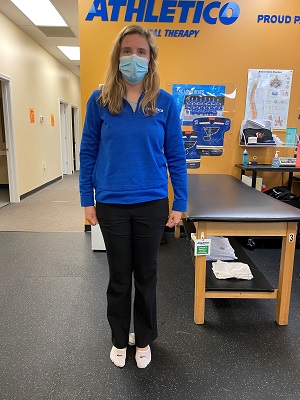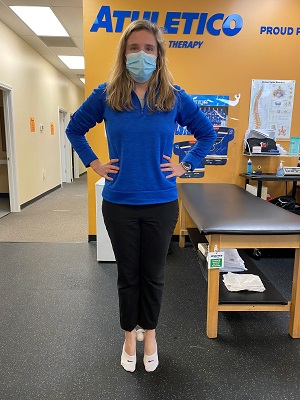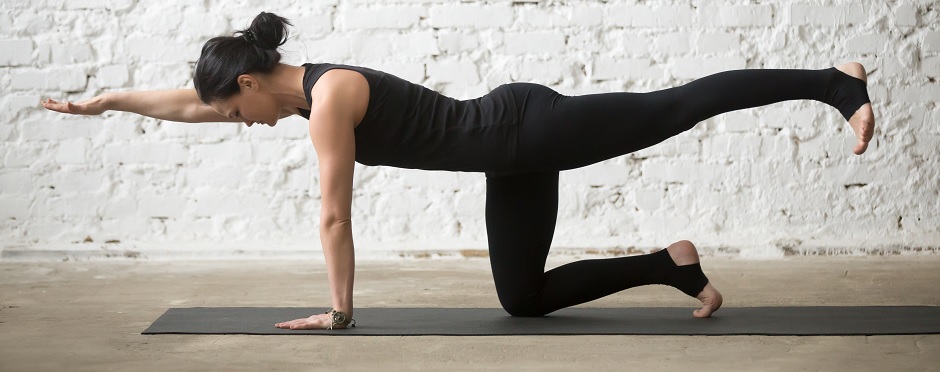
5 Tips to Prevent Common Running Injuries
Leave a CommentRunning has become an increasingly popular activity for exercise among people of all ages. In fact, 60 million people within the United States participate in some form of running activity each year. People participate in running activities for numerous reasons including: improving fitness, weight concerns, running a race/competition, staying healthy, and having fun. Running for 5 – 10 minutes per day has shown to decrease the risk of death and cardiovascular disease. Running less than 50 minutes per week has also shown to reduce the risk of death from heart disease when compared to individuals who don’t participate in running at all. While running has many benefits, about 50% of people get injured each year from running. Running injuries can be caused by poor running technique, reduced strength and flexibility, improper footwear, as well as overuse.
Most running injuries occur to the lower extremity. Cleveland Clinic reports the most common running injuries are plantar fasciitis, runners’ knee, IT band syndrome, Achilles tendinitis, shin splints, and stress fractures, though these are not the only injuries running can cause.2 Warming up and cooling down properly, running technique, proper shoe wear, mobility training, strength training, and other endurance related activities can help to prevent injuries commonly caused by running.
1. Warm Up/Cool Down
A proper warm up and cool down is essential for preventing injuries related to running. A warm up should include dynamic movements. A dynamic movement is a movement that is not held for a length of time, but actively uses the muscles that will be utilized. This helps to warm up the muscles and get the proper muscles to activate without weakening the muscles from static stretching. A dynamic warm up could include arm swings, leg swings, mini squats and sidestepping. A cool down should include static stretching. While this should not be performed prior to running as static stretching will reduce a muscle’s strength for the short term, it is important following running to reduce stiffness. Putting the body in different positions while holding the stretch is considered a static stretch. These can be held for 30 seconds to one minute. Another option for a cool down could be utilizing a foam roller or a massage gun.
2. Mobility Training
Proper mobility can allow for improved running mechanics. While too much stiffness or too much mobility can cause problems, being able to move properly through the motions needed is very important. Touching base with a local physical therapist regarding mobility can truly improve your running efficiency, as well as help to prevent common running injuries. This can be assessed by a physical therapist to determine which joints need mobility training and which joints need stability training.
3. Strength Training
Strength training is a great method to improve running and reduce injury risk with running. While mobility training is important, as stated above, strength training is also important. Strong muscles will allow for good shock absorption and stabilization of the leg to reduce injuries caused from increasing load. Below are a few exercises all runners should perform to prevent injury:
Clamshells: Lying on your side with your knees in line with your hips, tighten your tummy, squeeze your bottom, and lift your knee as high as you can without your pelvis rolling backwards. Perform 2-3 sets with 10 – 15 repetitions on each side.
Hip Hikes: Standing on the edge of a step, keep your knee straight, drop your pelvis to tap your heel to the floor, then lift your pelvis to lift the heel. DO NOT bend the knee or lean to move. Perform 2-3 sets with 10 – 15 repetitions on each side.
Bird Dogs: On your hands and knees, engage your core and lift your arm and the opposite leg without arching your back or leaning from side to side. Perform 3 sets of 10 repetitions alternating sides with each repetition.
Side Planks: Lying on your side with your elbow underneath you, you can either lift your hip with support on your knees or your feet and hold for 30 seconds to 1 minute. Perform this 3 to 5 times on each side.
Heel Raises with Tennis Ball: Place a small ball (tennis ball) between your heels, keeping the ball, raise your heels off the ground keeping your knees straight. Perform 3 sets of 20 repetitions.
4. Endurance Activities
Participating in different types of endurance activities also known as cross-training, will help to reduce injury from overuse with running. Different endurance activities could be HIIT, cycling, swimming, and elliptical. All of these activities done at different paces, intervals, and time lengths can help to improve cardiovascular activity and allow for improvement of endurance during running activities.
5. Running Technique and Shoe Wear
Running techniques can vary significantly. The most important technique in regards to running injuries is the initial contact phase, or when the foot first hits the ground. When a runner utilizes the heel at initial contact, the ground reaction forces (or load) through the lower extremity is absorbed mostly through the knee. This has a higher impact when compared to landing on the ground with the middle or the front of the foot, which is absorbed through the ankle and lower extremity musculature.3 Neither type of initial contact is wrong, but foot wear does matter. When utilizing the heel when initiating contact with the ground, it is important to have cushion through the heel to absorb some of the force to prevent injury. Individuals who prefer to run in minimalist shoes (less cushion) should contact the ground with the middle or the front of the foot.3
Meet with an Athletico Endurance Expert
Preventing injury with proper technique and different training methods is an effective and efficient way to improve physical fitness and prevent injuries for runners. Building an all-inclusive program is the key to success for runners. Seek professional advice from one of Athletico’s endurance team members regarding your current running program.
Athletico offers free assessments via telehealth or in-clinic. If you notice abnormal soreness, aches, or pains with a cross training routine or during your running, contact Athletico. Our team will assess your pain and provide recommendations for a treatment plan.
The Athletico blog is an educational resource written by Athletico employees. Athletico bloggers are licensed professionals who abide by the code of ethics outlined by their respective professional associations. The content published in blog posts represents the opinion of the individual author based on their expertise and experience. The content provided in this blog is for informational purposes only, does not constitute medical advice and should not be relied on for making personal health decisions.
References:
1. Lange, D. (n.d.). Running & Jogging – Statistics & Facts. Statista. https://www.statista.com/topics/1743/running-and-jogging/.
2. Larson, P. (2020, September 17). Facts on Foot Strike. Runner’s World. https://www.runnersworld.com/advanced/a20796790/facts-on-foot-strike/.
3. Leaf Group. (n.d.). 126 Running Statistics You Need to Know in 2021. LIVESTRONG.COM. https://www.livestrong.com/article/13730338-running-statistics/.
